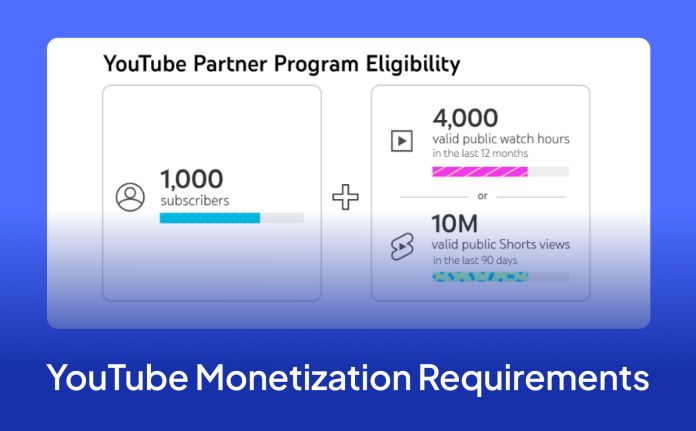In the rapidly evolving world of online content, YouTube continues to be a dominant platform for creators seeking to earn revenue through their videos. As of 2025, the platform has introduced new rules and policies to ensure quality content and fair monetization practices. Whether you’re a seasoned YouTuber or just starting out, understanding these updated guidelines is crucial to maintaining your income stream and growing your channel. This comprehensive guide aims to break down the latest YouTube monetization rules, helping creators navigate the platform’s policies confidently and effectively.
Understanding YouTube’s Monetization Eligibility Criteria in 2025
In 2025, YouTube has refined its eligibility requirements to ensure that monetized content aligns with community standards and brand safety. Creators must now meet a minimum threshold of 1,000 subscribers, a slight increase from previous years, emphasizing the importance of building a dedicated audience. Additionally, channels are required to have accumulated at least 4,000 valid public watch hours over the past 12 months, encouraging consistent content creation and viewer engagement. This shift aims to foster higher-quality channels that contribute positively to the platform’s ecosystem.
The platform also continues to prioritize compliance with its Community Guidelines and advertiser-friendly content policies. Channels found violating these policies, such as spreading misinformation or using inappropriate language, risk losing monetization privileges. YouTube now employs more advanced AI moderation tools combined with manual reviews to monitor content more effectively. Creators must remain vigilant about adhering to these standards, as even minor infractions can result in demonetization or channel strikes, impacting revenue and visibility.
Furthermore, creators need to enable two-factor authentication (2FA) on their accounts to qualify for monetization. This security measure helps protect channels from hacking and unauthorized access, which could compromise the integrity of the monetization process. Overall, these eligibility criteria in 2025 reflect YouTube’s commitment to fostering a safe, engaging, and sustainable platform for both creators and viewers alike.
Navigating the Updated YouTube Partner Program Policies
The YouTube Partner Program (YPP) policies have seen significant updates in 2025, designed to streamline the monetization process and clarify expectations for creators. One notable change is the introduction of a transparency dashboard, where creators can view their compliance status across various policy areas, making it easier to identify and address issues proactively. This tool emphasizes YouTube’s focus on accountability and ongoing support for creators who want to maintain their monetization privileges.
Another key update involves stricter rules around copyrighted content. In 2025, YouTube employs more sophisticated content ID matching and takedown procedures to prevent unauthorized use of copyrighted material. Creators are encouraged to use royalty-free music, original footage, or licensed assets to avoid copyright strikes that can jeopardize monetization. The platform also emphasizes the importance of proper attribution to protect creators from accidental violations, aligning with broader copyright laws and fostering respect for intellectual property.
The policy updates also extend to community conduct and content standards. YouTube now enforces clearer guidelines regarding hate speech, harassment, and harmful content, with tighter penalties for violations. Creators are expected to actively moderate comments and ensure their content promotes a positive environment. Failure to comply can lead to temporary or permanent demonetization, making it essential for creators to familiarize themselves with the detailed policies and regularly review their content to stay compliant in 2025.
Tips for Maintaining Monetization Compliance in 2025
Maintaining monetization in 2025 requires a proactive approach to policy adherence and content quality. First, creators should stay informed about the latest policy updates through YouTube’s official creator academy and community forums. Regularly reviewing platform guidelines ensures that content remains compliant and reduces the risk of strikes or demonetization. Creating a content calendar with clear standards also helps maintain consistency and quality across uploads, which is crucial for meeting watch time and subscriber thresholds.
Second, fostering a community that upholds respectful and positive interactions can significantly impact monetization status. Engaging with viewers through comments, live chats, and community posts encourages loyalty and helps identify potential issues early. Moderation tools like approved comment filters and auto-moderation bots can assist in managing harmful or inappropriate comments, ensuring that the discussion remains constructive and aligned with YouTube’s guidelines.
Lastly, investing in original and high-quality content not only attracts viewers but also minimizes copyright risks. Using royalty-free music, properly licensing third-party assets, and crediting sources are essential practices for compliance. Additionally, enabling 2FA and regularly reviewing your channel’s analytics can help spot potential issues before they escalate. By adopting these habits, creators can maintain a healthy, monetized channel that thrives amid the platform’s evolving policies in 2025.
Navigating YouTube’s monetization rules in 2025 might seem complex at first, but staying informed and proactive makes all the difference. By understanding the updated eligibility criteria, adhering to the new Partner Program policies, and practicing good content management, creators can continue to grow their channels and earn revenue responsibly. As YouTube evolves, so should your strategies—embrace the changes, stay compliant, and keep creating content that resonates with your audience. With these guidelines in mind, your journey towards sustainable monetization on YouTube will be well-equipped for success in 2025 and beyond.


